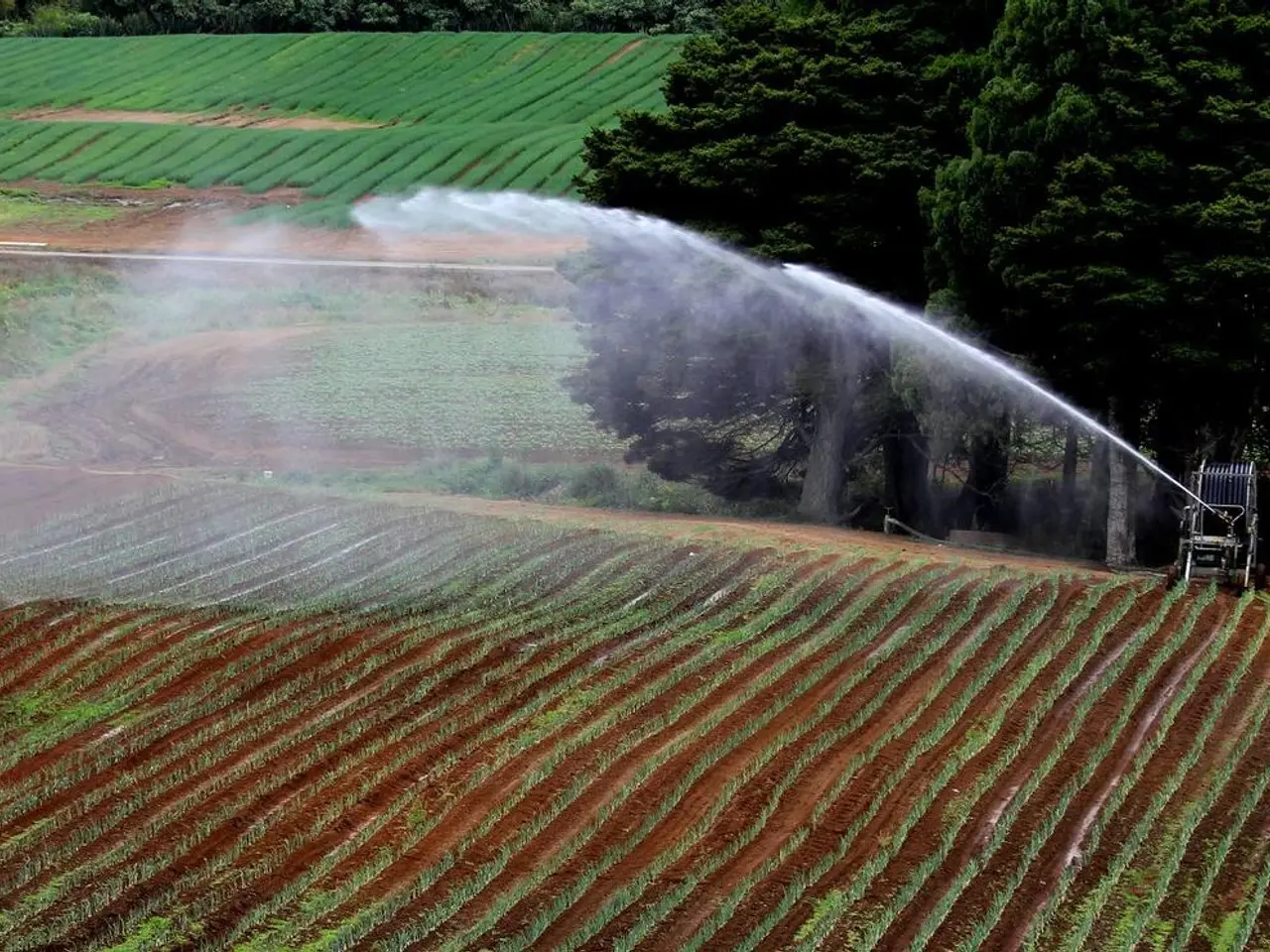Water-Resistant Gardening Using Permaculture Concepts
In the face of a severe drought, it's crucial to adapt our landscaping practices to conserve water. Here are some strategies that can help you create a drought-resistant garden, inspired by the principles of permaculture and Xeriscape design.
Firstly, mulching and canopy management are key strategies for saving water. Mulch keeps the soil moist and cuts down on evaporation, while managing the plant canopy helps save water by creating better microclimates. Thick layers of mulch can reduce evaporation and keep moisture levels steady.
Drip irrigation is another effective method, cutting water use by 30-50%. Combined with canopy management in your permaculture design, you can save a lot of water. Trees and shrubs can also use 20 to 40 percent less water than usual with this system.
Avoid over-tilling soil and add organic matter like compost to improve moisture retention. Soil and terrain modifications, such as mulching and earthworks, should be employed to improve moisture retention and aquifer recharge.
Native plants are key for drought-tolerant landscaping. They fit well with local weather and soil, making them more resilient in extreme weather conditions like heat waves and drought. For areas that often face drought, consider using drought-resistant grasses like Bermuda, zoysia, and buffalo grass.
Integrated water management strategies help save water and make landscapes more resilient. This includes efficient rainwater harvesting and storage systems to maximize water capture. Grey water can be used for tree crops to save fresh water and make landscapes stronger.
Adopting drought-tolerant landscaping is crucial for a sustainable future. By using native plants and reducing water-thirsty grass, we can create stunning gardens that last even in dry times. Drought-proofing goals should be established, prioritizing critical areas and zones.
Community collaboration and education are important for promoting drought-resilient practices. Studies show over 190 projects in the Landscape Performance Series have seen big improvements, including better ecosystem services and economic gains in sustainable rural landscapes.
The Transylvanian Garden ("Grădina Botanică Alexandru Borza") in Cluj-Napoca, Romania, is a great example of a drought-resistant garden. Its location at Strada Republicii 42, Cluj-Napoca, showcases the beauty and resilience of a well-designed drought-resistant garden.
Remember, working together and learning from each other is key to using water wisely and understanding permaculture. Designing for ecosystem services can improve pollination, water quality, and carbon capture. Keep the grass height at 3 to 4 inches during summer to conserve water.
By following these strategies, we can all contribute to a more water-wise and sustainable future. Let's work together to make our landscapes stronger and more resilient!








